Jennifer Sheahan: How to choose tiles for your home to fit your style and budget
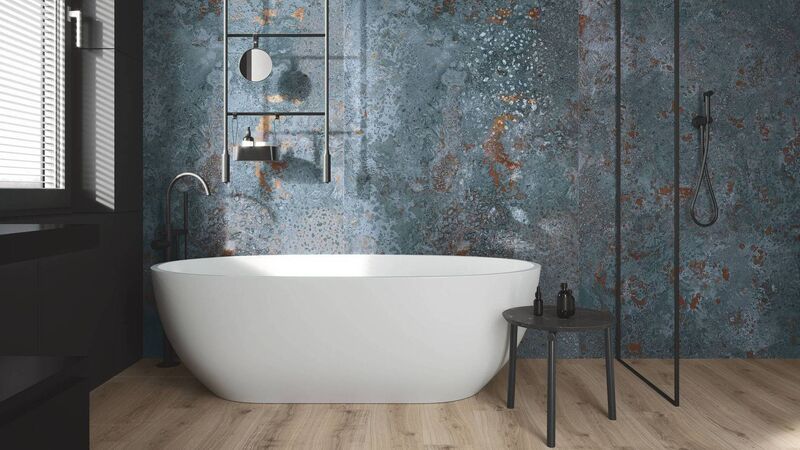
The Bora Bora tiles' glossy, wave-like designs are influenced by the ocean. Suitable for both walls and floors, they are available in a matte or polished finish, from €47.95/sq m, City Tiles & Bathrooms.
Tiles were a splurge item for me in my renovation budget. I really love a good tile. There’s a lot to love — they work with underfloor heating; they work in in wet areas; they come in every colour, pattern, and size imaginable; they go on walls and floors and even ceilings if that’s your thing; they can cover a whole room surface or decorate a small accent area; and they are generally very hardwearing and long lasting. They are one of the most versatile, hardworking, and expressive materials you can use in your home.
I have tiles in my hallway, in both of my bathrooms, as a kitchen backsplash, and even outdoors on a built-in bench in my garden. They’re durable, practical, easy to clean, and in the case of my patterned hallway, they hide dirt so well that I don’t even bother with a doormat. Hold your judgement, I do clean often enough — a quick sweep and a wipe-down and they look brand new.
With such a range of materials and finishes, choosing tiles can be overwhelming, so let me help break it down for you.
The most obvious benefit of tiles is that they perform well in wet or humid spaces like bathrooms and kitchens. This also makes them excellent for high-traffic areas where you want something that will stand up to heavy usage, such as mucky boots, dog paws, and dripping raincoats in hallways and utility rooms.
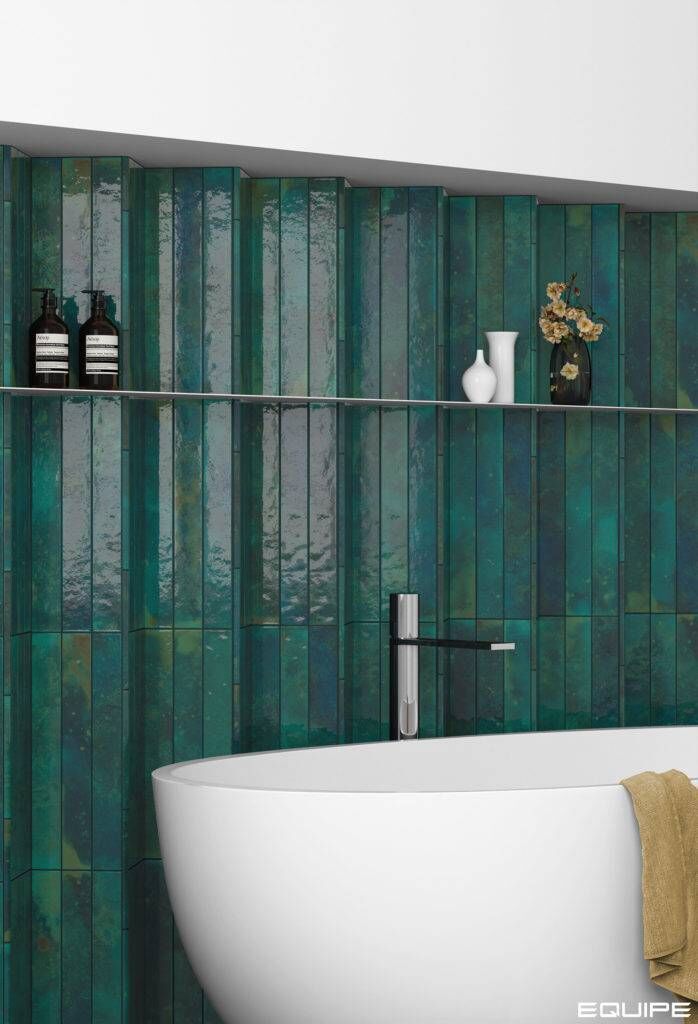
There actually isn’t anywhere where tiles don’t work, meaning that you can choose to tile your entire home if you like, but that’s a strong choice — tiles are hard and in large spaces can feel cold, so be prepared to soften the look with plenty of rugs.
Tiles also work outdoors, and running a tile from indoors to outdoors is a gorgeous way to visually expand your space and create a sense of flow. Outdoor-rated porcelain tiles come in thicker 20mm pavers and textured slip-resistant finishes, so you can tile a patio, garden path, or even steps knowing you won’t go skidding about in the rain.
Just be realistic — do not choose light colours and grouts that will discolour easily in Irish weather. Go for earthy matte tones, terracotta, terrazzo, stone, or even patterns if it’s not too overwhelming.
Tiles offer endless opportunities for personal expression, but a few general principles help keep a design feeling cohesive rather than chaotic.
Large tiles suit larger rooms; smaller tiles suit smaller ones. This is because scale needs something to reference — a tiny tile on a large floor can end up looking busy or dizzying, and a giant tile crammed into a tiny bathroom can feel overwhelming.

When it comes to pattern, it’s helpful to think in contrasts. If your walls are simple and calm, the floor is a great place to play. If your walls are already doing a lot — with bold colours, lots of artwork, or patterned wallpaper — choose a quieter tile on the floor.
When mixing more than one tile in a space, make one the clear focal point, and let the other be the supporting act.
A coloured ceramic herringbone tile in the shower paired with a neutral stone-look porcelain floor feels luxe without overwhelming the senses.
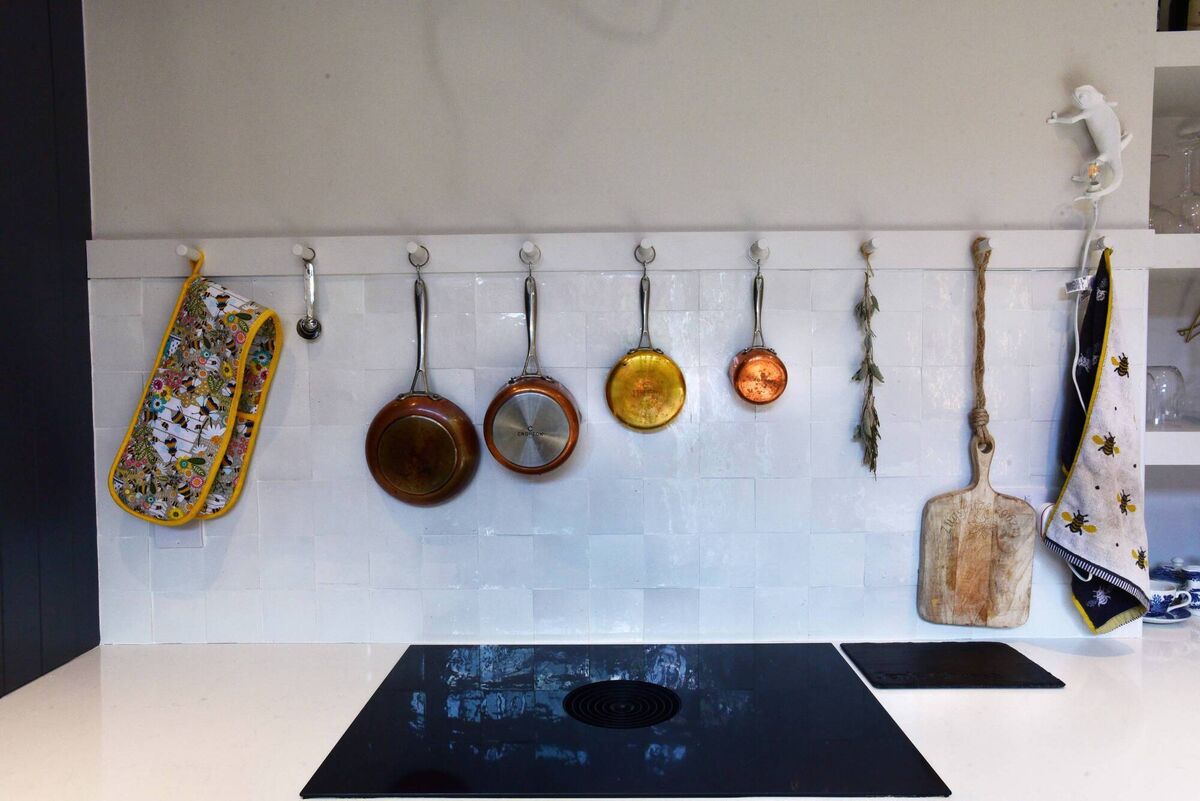
Finally, don’t forget texture. Tiles offer a fabulous opportunity to bring in additional layers of texture, which will add depth and interest to your room, from high-gloss glass wall tiles to a softer matte concrete tile. When it comes to texture, contrast is key — I have gloss-finish zellige tiles as my kitchen backsplash, which contrasts with my matte-finish cabinetry.
Tiles come in lots of materials, all of which have their relative benefits, which can be confusing, so here is my quick-fire guide to what works where.
Ceramic tiles are affordable, widely available, and versatile — they’re great for walls and light-use floors.
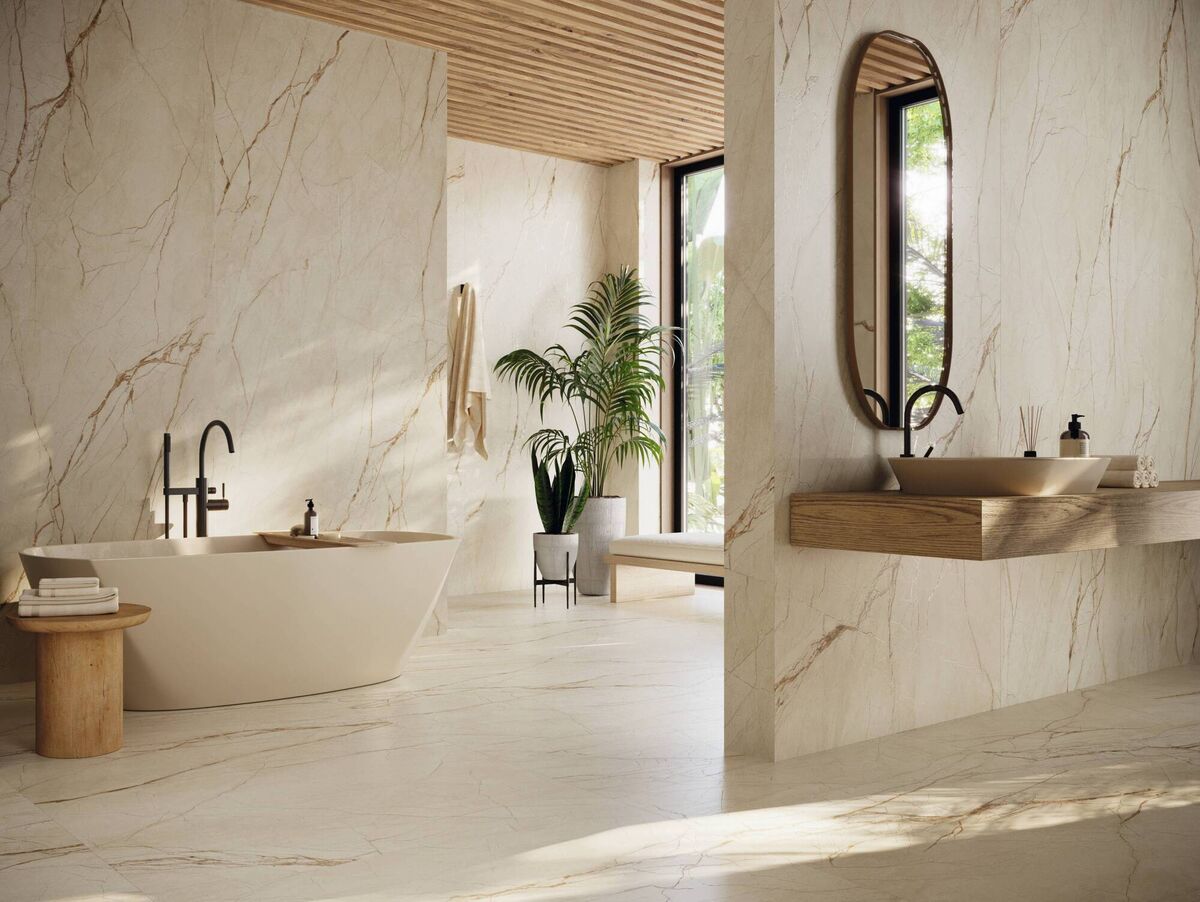
Porcelain is slightly more expensive but is the most durable and versatile — it’s brilliant for floors, high-traffic spaces, and outdoor continuity projects. It can also mimic stone, cement, timber, and even handmade tiles remarkably convincingly. Natural stone tiles — most commonly marble, slate, limestone, and sandstone — have natural variation that is endlessly beautiful, but are often porous and will require sealing and a bit more care.
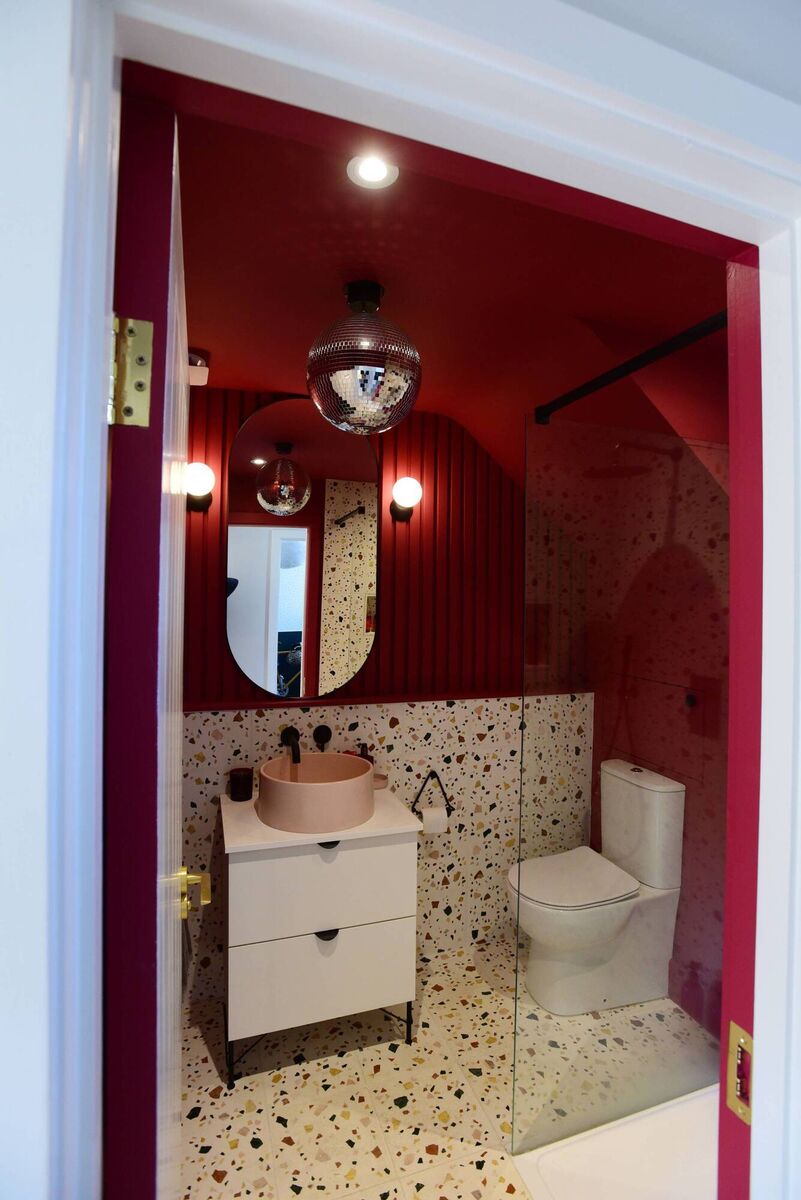
Concrete and terrazzo tiles are highly durable and offer a warm, artisanal look, but can require sealing and some light maintenance. Glass tiles reflect light beautifully and resist staining, though they can be prone to chipping, so are best used on walls and left mostly untouched.
Aside from material, the manufacturing method is important. For patterns, encaustic tiles are my preferred option, which is where the pattern comes from, different colours of clay inlaid into the tile. The alternative is to print the pattern on the surface of the tile, which can wear off in high-traffic areas and can show up if the edges of your tiles are visible.
Did you know grout comes in different colours? Grout is usually not even an afterthought when it comes to choosing tiles, but choosing the right grout colour can completely change the impact of your tiles.
Potentially more importantly, it can change the amount of effort you have to put into cleaning it — choosing a black or dark grout for floor tiles in high-traffic areas will literally save you years of your lifetime trying to scrub it back to a gleaming white. You’re welcome.

I now only use white grout where the joints are very tight, such as with zellige tiles, or in low-traffic areas where the grout is unlikely to become discoloured.
But that’s not all — you can also get coloured grout such as yellow, blue, and pink.
Tiles are expensive, and grout is cheap, so if you’re looking for high impact, then consider choosing affordable plain tiles and grouting them in a bold colour.
If you already have tiles but dislike the look, recolouring the grout is one of the most cost-effective updates you can make.
When choosing grout, look for polymer- or epoxy-based grouts which are more flexible and less likely to crack — especially important in older Irish houses where floors are rarely perfectly level.











